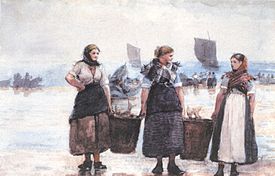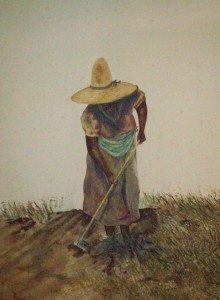
When I first began considering watercolor as a medium, I remember being attracted to the freshness and transparency in the many paintings that I saw. I also realized after attempting the medium there was so much to learn in not only the basic technique of getting the paint to do what you wanted it to, but the selection and mixture of the colors; not to mention, mastering fluid brushstrokes and confident glazes. After a great deal of time working with the medium, I realize that it will probably be a lifetime effort to master it; but, therein lies the challenge. And, although watercolor is not a forgivable medium, I’ve learned that mistakes (in some cases) are not totally disastrous. It may take rethinking the composition, but sometimes an artist is able to turn a negative into a positive.

Once I learned to have a “key” color and relate other colors to this color, I began to have a better feeling about my work. Of course, it was necessary to study warm and cool colors and learn to use them for their best effect. For example, in the watercolor, Woman in the Field (right), I used earth colors as a base: mixtures of Burnt Sienna, Raw Sienna, Burnt Umber, Yellow Ochre, Cadmium Yellow, Sap Green, Red and Ultramarine Blue.
Many of the grays in the picture were created by mixtures of Ultramarine Blue and Burnt Sienna, Raw Sienna and Sap Green, Ultramarine Blue and Burnt Umber.
An ongoing study of the Impressionists has given me the most important information I’ve needed to understand the valuable use of color. Their paintings are totally captivating. I have come to realize that it is color that makes the impact in a painting.
Making sure the values are correctly placed and balanced is crucial to a painting, but harmony in the painting is every bit as important.
Be sure to sign up for the Art Center Information newsletter and enter the drawing to win a free coffee table art book>>>Upper right hand corner of page.
